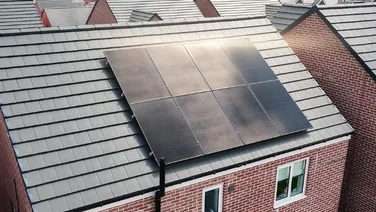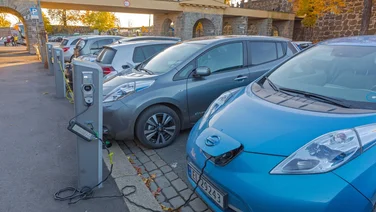- Avocados need around 15 times more water than apples need to grow
- Two avocados have double the carbon footprint of one kilogram (kg) of bananas
- The carbon footprint of beef is around ten times higher than avocados

The popularity of avocados is undeniable, but they are a topic of controversy. While some praise them as being a miracle superfood, others use them as an example as to why millennials can’t afford a house.
Both of these statements are exaggerated, but what is true is that one of the nation’s favourite food toppings isn’t as sustainable as you might think.
Although avocados are still better for the environment than meat, their popularity in the past 10 years has led to mass production, putting a strain on the environment.
In this guide, we’ll dive deep into the environmental impact of avocados, as well as which countries export and import them the most. We’ll also look at greener alternatives.
What is the environmental impact of avocados?
The mass production of avocados has a large carbon footprint, and continues to be a concern with farmers, manufacturers and consumers.
Just two avocados, weighing around 480g, have a carbon footprint of around 850g of carbon dioxide equivalent (CO2e), according to Carbon Footprint Ltd. For context, that’s around 425g of CO2e per avocado.
It’s worth noting that one banana has a carbon footprint of around 80g of CO2e (0.11kg), meaning avocados are twice as high.
Despite this, the carbon footprint of avocados is still lower than most animal products’ emissions. For example, beef has a carbon footprint of 15.5kg CO2e, according to CO2 Everything, almost 10kg higher than lamb, making it around 10x the carbon footprint of avocados.
Aside from this, the main environmental issues of avocado production include water usage and soil degradation.
How do avocados harm the environment?
An avocados supply chain is what can cause harm to the environment. The activities involved generate a lot of carbon emissions, from shipping the products overseas, using a lot of water to grow them and causing deforestation to make more space for avocado farms.
In terms of water use, it takes approximately 320l of water to produce just one avocado, compared to 15l of water to grow one apple.
This can lead to water resources in local communities being taken away from crops that grow produce. This is because of the profitability of avocados.
On the flip side, avocado production still uses less water than meat production. An analysis by Cranfield University found that British beef, as well as studies for other beef producing countries, have assessed water usage to be at more than 15,000l per kg.
The UK avocado market
Most avocados consumed in the UK come from countries, like Peru, Kenya and Chile. As a result, its food miles are quite significant, as its carbon footprint.
What’s more, avocados need a lot of space to grow, and have been linked to deforestation in countries that produce them. In Mexico, the world’s largest producer of avocados, around 20,000 acres (80 square kilometers) are cleared yearly to make space for avocado production.
Deforestation is of particular importance among environmentalists because fewer trees means less carbon dioxide absorbed from the atmosphere. It can also lead to soil degradation, too. This is because monoculture, like avocados, draws all the nutrients from the soil, causing year-on-year degradation.
Want to learn more? Take a look at why tree-planting schemes aren’t always the answer to deforestation using our guide: Are tree-planting schemes actually working?
Which country exports the most avocados?
Mexico exports the most avocados, accounting for around 55%–60% of global exports. Colombia is the second-largest followed by Peru and Indonesia.
Look at the table below to determine the metric tonnes produced for each country:
Country | Avocado export quantities (in tonnes) |
|---|---|
Mexico | 1.4 million |
Peru | 542,000 |
Chile | 98,000 |
Kenya | 95,000 |
South Africa | 53,000 |
*Data from a World Population Review of avocado production in 2022
Which country imports the most avocados?
North America and Europe are the largest importers of avocados, with North America accounting for 52% of imports, and Europe for 33%.
The United States imports the most avocados out of any country, importing an estimated £2.8bn of avocados over a 10 year period, most of which come from Mexico.
The Netherlands imports the most avocados in Europe, but it’s also a transit hub that distributes avocados to other European countries – so residents don’t necessarily consume the largest amount of avocados.
Beside the Netherlands, the European countries that import and consume the most avocados are Spain, France, Germany and the UK. According to the CBI Ministry of Foreign Affairs, in 2022, the UK imported 116,000 tonnes of avocados.

Why have avocados become so popular?
Avocados are popular because of their supposed health benefits. They have been marketed as a ‘health food’ or ‘superfood’ since around the 2010s when global sales of avocados increased by 21%, according to the International Trade Centre.
The popularity of various meal options you can make using avocado, like guacamole and avocado on toast, have also helped skyrocket sales and production.
Avocados are praised for being a source of ‘good’ monounsaturated fat, fibre, vitamin E, vitamin C, magnesium, potassium, and more.
It’s worth noting that while humans need these nutrients, it’s not the only vegetable to offer them. Beets, potatoes and oranges offer similar nutrients, and tend to be grown in the UK.
Greener alternatives to avocados
If you’re looking to reduce your carbon footprint, swapping out your avocado for an alternative is best.
If your meal of choice is avocado on toast, try a lemony broad bean or pea mash. They don’t taste exactly the same as avocado, but they offer a similar visual and textural experience.
Both peas and broad beans are produced in the UK and growing them doesn’t use a lot of water, meaning a lower carbon and water footprint.
They also share similar nutritional benefits, and are high in iron, which avocados are not.
There’s also peanut butter, if your goals are to consume monounsaturated fats and fibre. Peanuts aren’t as environmentally friendly as peas, and aren’t grown locally, but they use much less water than avocado production.
Summary
- Although avocados are still better for the environment than meat, their popularity in the past 10 years has led to mass production
- Just two avocados, weighing around 480g, have a carbon footprint of around 850g of carbon dioxide equivalent
- The carbon footprint of avocados is still lower than most animal products’ emissions
- It takes approximately 320l of water to produce just one avocado
- Avocados are popular because of their supposed health benefits
- Avocados are praised for being a source of ‘good’ monounsaturated fat, fibre, vitamin E, vitamin C, magnesium, potassium, and more






